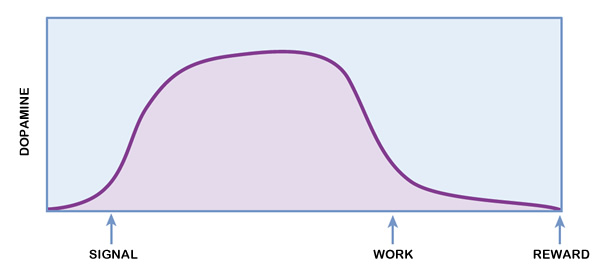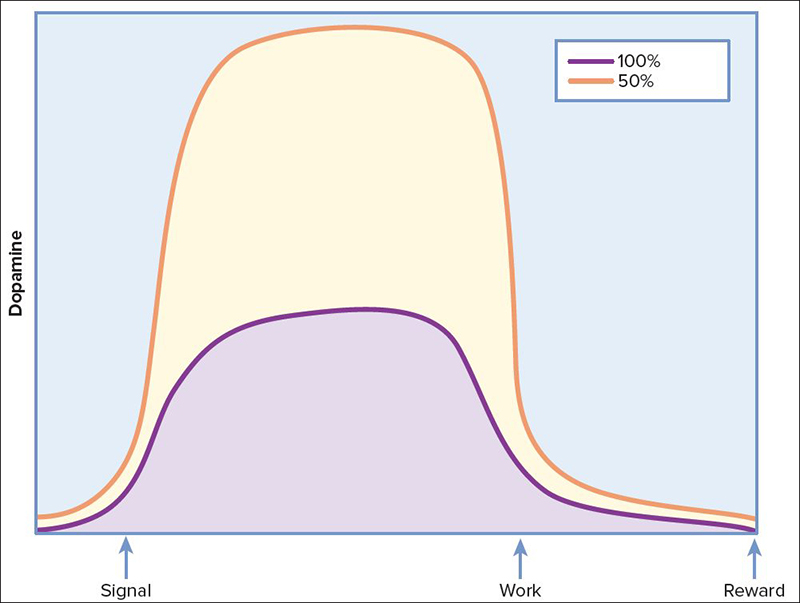
Whether you love it or hate it, there’s no denying that CrossFit has had a bigger impact on the fitness industry than anything else in the last 20 years. In the span of just a few years, CrossFit went from little more than an underground website posting workouts to a Reebok-sponsored, multi-million dollar behemoth with new gyms popping up around every corner.
Almost overnight, the term “CrossFitting” was born and millions of people jumped on the bandwagon.
Although just about everyone these days has an opinion about whether or not the explosion of CrossFit has been a good thing or a bad thing – and although there’ve been a million CrossFit-bashing articles – what I want to share with you is something much more important… how CrossFit can make you a better coach.
Yes… you read that right. If you’re familiar with my articles or books and you know with my training philosophy, you’re probably surprised to hear me say that every coach can learn something from CrossFit, but it’s the truth…
I say this because once you understand why CrossFit works – the secret that has driven millions of people to pay good money to do the same calisthenics they hated doing in gym class as kids–you’ll discover that it’s not that hard to put the same incredibly powerful secret to work for you.
Whether you’re a coach, trainer, gym owner, or anything in between, it’s not an understatement to say that discovering the real power behind CrossFit is one of the most valuable lessons you’ll ever learn.
Why working out is too much work
Before I get to the heart of how this lesson will make you a better coach, build a more successful business, and deliver better results, we have to first look at why so many training programs fail in the first place.
We need to understand the answers to questions like:
- Why do millions of people start going to the gym every January only to quit in February?
- Why does 80% of the US population fail to get even the minimum recommended amount of exercise?
- Why are two out of every three people in the US overweight and one out of every three considered obese?
- Why is it so much easier to put on weight than it is to lose it?
Though it can be easy to blunt the answers with a simple dismissal that most people are just “lazy,” the truth is much more complicated. The real answers are embedded in how we’re hardwired as human beings.
In other words, the single reason the vast majority of people don’t workout, or even do much activity at all, is because exercising is extremely costly energetically and doesn’t make a whole lot of sense from a biological standpoint.
We’re all hardwired for survival
In nature, survival depends on the ability to find food and avoid starvation. When animals are unable to do this, of course, they die. So decisions about energy expenditure and energy storage are literally hardwired into our biology.
We’re preprogrammed to expend energy only when necessary and that means when there’s a reward – or at least the brain predicts there will be a reward – for doing so.
This is such a well-researched area of biology that there’s an entire theory, called “Optimal Foraging Theory,” that helps explain animal behavior when it comes to searching for food. The theory goes something like this: in order for animals to find food, they have to expend a certain number of calories as part of the searching and gathering process.
If a wild animal burns more calories finding food than the food actually provides, it’s only a matter of time before the animal starves to death.
This means that in order to survive, animal brains are constantly optimizing decisions about how much energy to expend gathering in one place before it’s more beneficial to travel to another, more food-dense foraging site. These are literally life and death decisions and natural selection has favored animals that are better at this strategy than others.
Supermarkets don’t change our biology

We may not have to scour the forests for food, but our brains are still hardwired to make sure that when we expend energy, there’s a good reason for it. Our genetics don’t know that we can make a single trip to Costco and get enough food to last a year.
Our brains are still working to optimize our energy expenditure based on survival instincts, which means not doing things like working out unless there’s a very good reason for it.
Think about it: working out is literally nothing more expending a massive amount of energy, not just during the workout itself, but also afterward when energy is allocated to repairing and rebuilding tissues that were stressed during the workout.
In nature, it’s better to lay around and conserve your energy until you need it to find food. It doesn’t pay to be jacked and tan.
That’s the single biggest reason why the majority of people don’t work out and why such a large percentage of the population is overweight…
Is working out really worth it?
Human beings are innately driven to conserve energy and our resting-state physiology favors energy storage over energy expenditure because it’s better for survival.
This is why it’s so hard to lose weight, why so many people quit working out a month after they start, and why it can take weeks to lose a few pounds of fat that seemed to only take a few days to put on.
We’re designed to store calories easier than we burn them and only move when there’s a really good reason to (like fending off a lion or gathering food). It’s just human nature.
As a society, we’re obsessed with finding more and more ways to do less and less work. We order from Amazon so we don’t have to leave our houses to shop, we have pre-made meals shipped to our houses so we don’t have to cook, we email and text people sitting in offices next to ours so we don’t have to walk across the hall.
We’re better at finding ways to avoid having to move and burn calories than just about anything else. So it shouldn’t be surprising that so many people don’t workout, or even get off the couch, if they can avoid it.
The chemical that changes everything (and fuels CrossFit’s success)
When it comes to making the decision to go to the gym or sit on the couch, dopamine is the most important chemical in our brains. Yet most people are dead wrong about when this chemical comes into play. Popular belief pits dopamine as the reward/pleasure chemical–something we’re constantly seeking out and that’s driving our behaviors.
Instead, science has shown that dopamine isn’t about the reward – it doesn’t spike when we get the reward and it has nothing to do with feeling pleasure – it’s about the prediction of reward, and this is a very different thing.
We don’t seek out behaviors and activities that lead to a big spike in dopamine production. What causes us to behave a certain way is actually the spike in dopamine before we even act.
The way most people think of dopamine is backward. It’s the dopamine that drives behavior, not the other way around.
Monkeys don’t work out
The fact that dopamine spikes in response to a predicted reward has been proven over and over again in animal research. The classic example is a monkey learning to press a level to get a reward (food). Researchers first condition the monkey to press the lever by giving a cue — usually turning on a light or making a noise—and then the monkey learns that pressing the lever causes food to be dispensed.
Once the monkey learns this behavior, it’s dopamine release pattern looks something like this:

It’s pretty clear that the rise in dopamine doesn’t happen when the monkey gets the reward, as most people would expect. Instead, it rises after the signal and drives the monkey to press the lever in the first place.
How do we know this?
When scientists administer a drug that blocks the rise of dopamine, the monkey no longer presses the lever, even though it knows that it’s the only way to can get the food.
The lesson is simple: no rise in dopamine, no work.
Dopamine is the brain’s way of predicting the reward, of determining whether or not the work is worth the energy. This single principle has huge implications when it comes to working out.
When working out doesn’t work
Given the true role of dopamine in driving work that leads to a reward, it should start to become clear why so many people don’t work out, or at least don’t work out for very long before quitting.
When someone first starts training, his/her brain sees very rapid progress, i.e. a big reward from the work. Body fat quickly drops, strength grows, aerobic fitness improves, etc.
Nothing feels better than progress.
Everyone loves that initial feeling of making quick gains. It conditions the brain to expect a big payoff from all the work. This predicted reward leads to a large dopamine spike that precedes the workout, and that spike is what strongly motivates the person to work out.
Remember, dopamine is what drives behavior, so lots of dopamine = a high motivation to train.
The big problem with fitness, however, is that progress is never linear. Those initially rapid gains inevitably start slowing down, usually within a matter of weeks.
Once this happens, everything changes.
As soon as the reward diminishes, the brain starts to realize that its prediction was wrong – the work isn’t leading the same level of reward. So the brain adjusts the pre-workout rise in dopamine accordingly.
From a survival standpoint, why would the brain promote energy expenditure (work) if there isn’t a very clear reward for doing so? In the wild, this is a sure-fire recipe for extinction.
This is why you don’t see animals doing push-ups.
Well, except this one:

The genius of CrossFit
The “laziness” I talked about in the beginning of this article can be explained by two phenomena:
- the brain’s unyielding will to survive and manage energy expenditure via changes in motivation
- the inherent, nonlinear nature of training results
As soon as the brain fails to see the results it expects from pouring energy into training, dopamine levels take a nose dive and the motivation to train goes along with them.
These diminishing returns are nothing more than biology at work. Until CrossFit came along, it didn’t seem like there was a good way around this. Conventional programs fail the vast majority of the time, to the point that 80% of the US population doesn’t even try.
What CrossFit unknowingly did to change all this, however, is nothing short of genius. By completely altering the way the brain perceives and predicts the reward of training, CrossFit found a way to hijack our dopamine-driven behaviors altogether.
Crossfit shifted the workout goal from a particular result (reward) – such as a change in body composition – to simply finishing the workout.
Completing the “workout of the day” literally became the training goal rather than any specific changes in body composition or fitness. CrossFit even redefined “fitness” entirely as some vague “broad time and modal domains” terminology that’s impossible to measure.
The beauty of this is that if you can’t measure something, you can’t see that it may not actually be improving. The brain never receives negative feedback when the hard work fails to produce any reward. Dopamine levels never decrease to the point that you would rather sit on the couch than go train CrossFit.
Like I said, it’s pure genius.
The Prime Now generation
People do not feel more compelled to do a CrossFit workout than other forms of training because it’s monumentally more effective or new in any way. No, people do it because they get a sense of satisfaction and reward once they’ve put in the work and finished the workout of the day.
The fact that CrossFit perpetuates the idea that these workouts are incredibly high intensity and difficult to do only furthers the sense of reward from “conquering” a workout.
Put in the work, get the reward, put in the work, get the reward. It’s easy to see how this drives up dopamine and prevents the negative feedback that occurs when specific goals take months or even years to achieve.
If there’s one thing that’s clear, it’s that our society cares more and more about the immediacy of everything. Getting our orders delivered from Amazon in two days isn’t fast enough. We want Prime Now so we can get packages in two hours.
There’s a reason that Amazon is investing in technology like drones to deliver things even faster. Now is always better than later.
Most people, though not all, are generally very bad at putting in a lot of work when the payout is very far off. Our brains are much more oriented toward seeking out and reinforcing behaviors that lead to immediate rewards. This is where CrossFit excels and it’s something every coach can learn from.
Lesson #1: Always focus on short-term goals
If you have to take away one single lesson from the rise and success of CrossFit, it’s this: people are generally compelled toward behavior that delivers immediate results and away from behavior that doesn’t seem to produce any reward.
You wouldn’t likely go to work every day if you weren’t getting paid. Similarly, you wouldn’t expect dopamine levels to stay elevated when the massive amount of energy you’re expending isn’t causing the scale to move, the weights to feel lighter, or the running to get easier.
If you really want to be a good coach, you should start each and every workout with, “Today’s goals are…”
tweet thisWhy do the work if you aren’t getting paid for it?
If the only goals your clients are focused on are goals that are inherently slow moving and nonlinear in nature, it’s only a matter of time before their motivation decreases as they plateau.
The way to approach this problem is to teach your clients to focus not on the long-term goals, but on the process of achieving them. Whether it’s getting in enough steps, completing the workout they had planned, avoiding foods they know they shouldn’t be eating, or anything else, you can help your clients stay motivated simply by shifting the focus towards achieving these very short-term goals.
If you really want to be a good coach, you should start out each and every workout with, “Today’s goals are….” and give them 2-3 things that you want to achieve in the session.
At the end of every session, you should review what your clients accomplished, how many calories they burned, how many steps they took, what their average heart rate was, how many sets they did, PRs, they set, etc., and reinforce that they accomplished something and the work was worth it.
Even though things like weight loss and strength in major lifts are never going to be linear, you can use a variety of factors within a workout to show progress and set goals. The goal may be as simple as increasing a single lift by 5lbs from the previous workout or doing 3 more reps on a given exercise. My point is that any reward is better than no reward.
No reward for a lot of work is the biggest motivation killer there is, so you must avoid it at all costs.
Your clients don’t have to hit every single goal that you set for them in every single workout. In fact, it’s better if they don’t or it won’t seem like the goals were difficult enough and there won’t be satisfaction in achieving them. However, they do have to see progress from one workout to the next to prevent a drop in dopamine and motivation.
Setting the right goals is crucial, which brings us to lesson #2:
Lesson #2: Always strive to underpromise and overdeliver
One of the biggest mistakes you can make when working with a new client is to set unrealistic expectations that are almost impossible to meet. This is an easy mistake to make because training is a business for most people and every business relies on getting new clients, which means sales have to be made.
During the sales process, it’s easy to see why a trainer would want to overpromise the results that the client can expect. This is only exacerbated by the fact that just about every client you’ll ever work has unrealistic expectations to start with.
The problem is that the fitness industry is full of hype marketing. Just pick up the cover of any major fitness magazine and read the headlines, or watch the late-night infomercials with professional models and photoshopped before-and-after photos to see what you’re up against.
Remember, dopamine and motivation are driven by the predicted reward and whether or not that those predictions turn out to be accurate, more than the actual reward itself.
To illustrate what I mean, consider two new training clients that both want to lose weight. Imagine that Client A is told that it’s reasonable to expect to lose 5lbs in the first month of training. Client B, on the other hand, is told to expect 10lbs of weight loss.
What do you think will happen to their dopamine levels and motivation if they both end up losing 5lbs?
Remember, both of them were putting in the work based on the predicted rewards. When client B’s results fall short, he or she is disappointed and his/her dopamine levels drop. Client A’s results are exactly as predicted, so his or her dopamine levels are expected to remain the same.
Now imagine if Client A actually lost 6 or 7lbs. In this case, it’s likely his or her motivation would actually go up because dopamine levels will increase as the brain recognizes an even greater than anticipated reward.
CrossFit gets around the potential for negative feedback by avoiding goals related to anything other than completing the workout. There are drawbacks to this approach as a long-term strategy, however – something that you can see by the number of CrossFit gyms closing their doors these days. A better approach is to focus on achieving goals within each and every workout, but also tie them to other areas that are important to your clients as well.
This means that aside from always using short-term goals, the next most important thing to keep in mind is that the goals you set must be both realistic and achievable for your clients. An unrealistic goal is never a good thing and it’s your job as their coach or trainer to avoid these at all costs.
Telling a prospective client that your program is going to increase his/her squat by 50lbs in two weeks– something you’d expect to read on a magazine cover – might seem like a good way to get a new client, but it’s definitely not the right way to keep one for very long.
Lesson #3: Introduce intermittent reinforcement
The connection between CrossFit and gambling may seem like a stretch, but when you look at how dopamine functions in situations where this is something called “intermittent reinforcement,” it’s easy to see the connection.
Going back to our example of a lever-pressing monkey, scientists have also researched what happens when different reward variables are introduced.
The most interesting variation is when researcher only gave the monkey a reward 50% of the time. The monkeys see the same signal, press the same lever, but half the time they get the reward and half the time they get nothing.
Think of it as gambling for monkeys.

In these cases, what do you think happens to dopamine levels and the motivation to do the work? Although it might seem logical that less frequent rewards would lead to a lower level of dopamine, research actually shows that the opposite is true.

As you can see from the graph, when reward uncertainty is introduced into the equation, dopamine levels actually double! In other words, we are strongly compelled toward behaviors that lead to somewhat unpredictable outcomes.
Predictable rewards drive behavior as well, of course, but when we are only rewarded some of the time, it’s an incredibly powerful motivator. It turns out that “maybe” is very hard to resist.
Whether it’s checking your email a hundred times a day, watching for notifications on social media every 10 minutes, or constantly chasing after the girl or guy that may or may not be interested, we’re inherently driven towards unpredictable rewards.
Vegas learned this lesson a long time ago
Though craving unpredictable outcomes may seem completely counterintuitive to the biology of survival, scientists believe that it is actually essential. This makes sense when you revisit the idea of foraging for food: the search does not always result in a reward.
If biology only drove behaviors that produced a reward 100% of the time, what would happen to the animal that spends three days hunting for food without finding any? Without the innate tendency to chase unpredictable rewards, it would simply give up.
When it comes to CrossFit, the unpredictability and variety of the workout is part of what compels people to do it. Even if it can be effective, doing the same workout over and over again is boring for most people.
Because you never know what the workout of the day is going to be until you get to the gym, there’s a level of uncertainty that reinforces the motivation to train. Just like people love the sound of a new text message because they don’t know for sure who it’s from, people are more motivated (subconsciously) to go to the gym so they can find out what the workout for the day is going to be.
The most powerful word
Maybe there will be a particular exercise that you’re really good at and love doing?
Maybe the workout will have something totally new that you’ve never done before?
“Maybe” is a powerful word, indeed. The way to use this power to your advantage is to introduce some unpredictability into your training programs. While I definitely don’t advocate making everything completely random to the extent that CrossFit often does, there is something to be said for introducing variety into your program every couple of weeks.
It can be as simple as using a kettlebell instead of a dumbbell, performing an exercise backwards, introducing a different warm-up drill, etc. Variety doesn’t have to mean that everything is different all the time, but some level of unpredictability and novelty is good for keeping your clients coming back for more.
Even better, introduce random rewards such as a free t-shirt, a gift card to a local restaurant, etc., at different stages of your program. Giving a client a completely unexpected $10 gift card as a thanks for their business can go a very long way in keeping them coming back again and again. Unexpected and unpredictable rewards are incredibly powerful subconscious motivators
This is what customer loyalty (rewards) programs are all about and why ever major company out there uses them. If you’re serious about being an effective coach and keeping your clients’ motivation to train with you as high as possible, there’s no better way than to use the science of gambling and addiction to your advantage.
